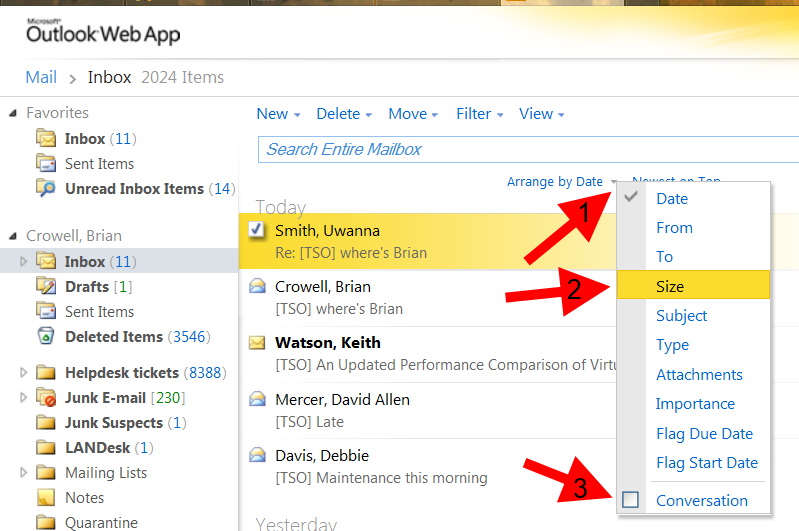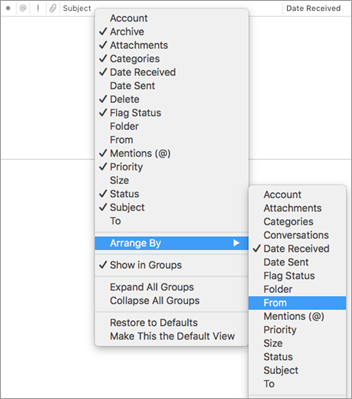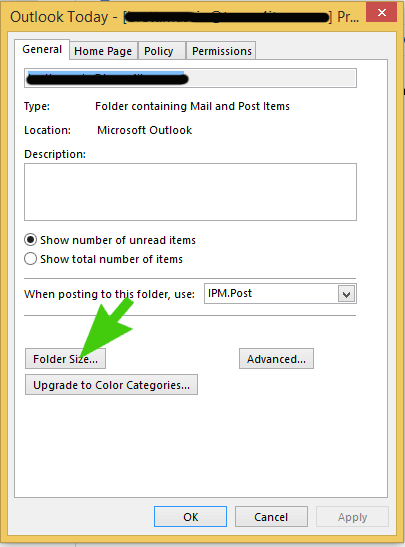

- VIEW FOLDER SIZE OUTLOOK FOR MAC FOR MAC
- VIEW FOLDER SIZE OUTLOOK FOR MAC ARCHIVE
- VIEW FOLDER SIZE OUTLOOK FOR MAC MAC
It’s not used a lot on Windows computers now because hard drives have become a lot larger and cheaper. It’s easy to use and available on the Properties dialog for any file, folder or entire NTFS drive. NTFS Compress works seamlessly in the background. Windows users have a ‘Compress contents’ options to shrink the disk space used by files.
VIEW FOLDER SIZE OUTLOOK FOR MAC MAC
Before you buy a new Mac or get a third-party drive upgrade, check out a somewhat hidden feature in the macOS – HFS+ compression. The result can be many gigabytes used up on a relatively small drive. In particular, the ability to only sync the most recent messages. Unfortunately, Outlook for Mac, even the latest Outlook 2016 doesn’t have some of the space saving options available to Office for Windows.
VIEW FOLDER SIZE OUTLOOK FOR MAC FOR MAC
Mac computers can have relatively small hard drives like 128GB or 265GB which Outlook 2016 for Mac can gobble up.

Outlook for Mac is a disk space hog but the macOS has a way to recover some of that. You might lose your data forever.Thanks for joining us! You'll get a welcome message in a few moments. Do it carefully, lest you delete the contents that you didn’t export. Now, delete the data you archived just now from the Outlook to save space.
VIEW FOLDER SIZE OUTLOOK FOR MAC ARCHIVE
Check the items you want to archive and exportīoth versions are similar, but in Outlook 2011, you do not get the ‘Export’ button directly under the ‘Tool’s tab you have to go to ‘File’ to get it.With previous 2011 edition of Outlook, you have to follow a slightly different steps: Note that the above method is for Outlook 2016. – Click ‘Finish’ once Outlook has finished archiving and exporting data.


More emails you get, the largest your database gets. This is due to the increase in the size of ‘identity’ or ‘profile’ folders database. Emails are so common and rich of data these days that it’s very common for any email client to quickly become sluggish and slow.


 0 kommentar(er)
0 kommentar(er)
